 Tatra (Zavody Tatra to be precise, which
translates to Tatra Works Ltd.). Finally the successful Tatra marque was
reflected in its manufacturer's name.
Tatra (Zavody Tatra to be precise, which
translates to Tatra Works Ltd.). Finally the successful Tatra marque was
reflected in its manufacturer's name.
In 1927 the company was renamed  Tatra (Zavody Tatra to be precise, which
translates to Tatra Works Ltd.). Finally the successful Tatra marque was
reflected in its manufacturer's name.
Tatra (Zavody Tatra to be precise, which
translates to Tatra Works Ltd.). Finally the successful Tatra marque was
reflected in its manufacturer's name.
The model T52, an elegant 90 km/h mid-sized automobile, was introduced in
1930 and remained in production into 1938. Its 1.9-litre four generated 30
bhp. Various body styles were available as seen below.
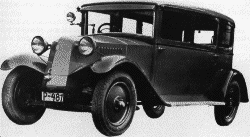
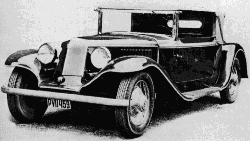 fine examples of the T52
fine examples of the T52
But the big news for that year was the appearance of the large and
luxurious T70 - possibly a replacement for the previously mentioned T17 and
T17/31 models which it exceeded in size - and the ultra-luxury
top-of-the-line T80, both having similar chassis dimensions (such as a
wheelbase of 3800 mm).
The 65 bhp six-cylinder motor used to power the T70 was based on the one used in the T17/31, but with a capacity of 3.4-litres. Stopping power was provided by 4-wheel double-circuit hydraulic brakes. Improvements to the suspension and an increase to 70 bhp, by upping the engine capacity to 3.8-litres, came a few years later in the form of the T70a. Its synchronised 3-speed transmission had a free-wheeling option. Both models were discontinued in 1938.
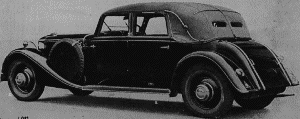 a beautiful T70a sedan
a beautiful T70a sedanWhat differentiated the prestigous T80 from the T70 was the first use of a twelve-cylinder power-plant by a Tatra automobile. This car was to demonstrate that Tatra could go head-to-head with luxury-car-producing companies in the west. It was actually one of largest cars of the day.
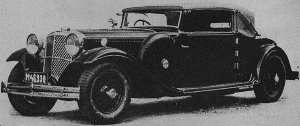 a pretty T80 cabriolet
a pretty T80 cabrioletThe Ledwinka-designed T80 was constructed using the usual high-standard Tatra practice, especially the suspension which provided for a smooth and quiet ride appropriate for such a high-class automobile. The central-tube chassis and independent swing-axle suspension, both having been perfected for years, were quite uncommon for automobiles of this size. A low centre of gravity, low unsprung weight, and a high power-to-weight ratio were some of the other niceties. The water-cooled L-head 5.99-litre V12, the highest capacity engine ever installed in a Tatra automobile, produced a healthy low-rpm output of 120 bhp and gave a maximum speed of 140 km/h to the big and heavy (2500kg) T80.
Fierce competition in the luxury car market segment and the high price of the T80 were some of the reasons for few sales, 22 to be precise, in its production years from 1930 to 1935. The President and Minister of Foreign Affairs of Czechoslovakia at the time both owned T80s.
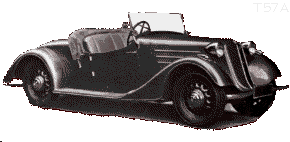
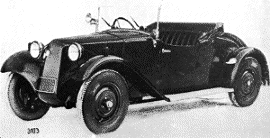
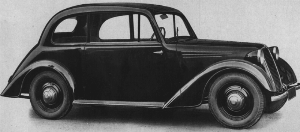 T57B
T57B
In 1933 the rather popular T75 was presented and in 1942 culminated in
sales of 4500. A 1.68-litre 4-cylinder air-cooled engine powered the various
versions offered and provided a top speed of 100 km/h. Hydraulic brakes were
standard.
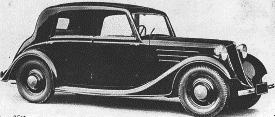 the elegant T75
the elegant T75